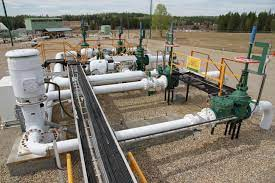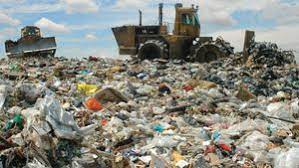Compounds that contribute significantly to environmental pollution include fragrances, commonly referred to as smells, and volatile organic compounds. Due to their limited solubility in water and high vapour pressure, they are gaseous pollutants and chemical vapours. Odour removal plays a huge role here.
Urbanized regions are most affected by the smells, which are caused by the burning of hydrocarbon fuels, the chemical and petrochemical industries, as well as mining, municipal, food processing, and agricultural waste.
Waste management facilities, wastewater treatment facilities, as well as food and agricultural processing facilities, are the industries with the biggest odour nuisance. Humans can detect odours at extremely low concentrations thanks to a combination of volatile molecules known as odorous gases.
All living things, notable humans, are affected by them significantly, which results in health issues. Due to odour annoyance, odours can also harm mental health. They are poisonous, carcinogenic, and mutagenic.
Wastewater Treatment Facilities Odour: What Causes It?
Companies from the municipal sector, such as wastewater treatment plants, waste management plants, or composting plants, are among the facilities that release the most persistent hazardous gases. These odours are often caused by the anaerobic breakdown of organic molecules.
The hydrogen sulphide, a byproduct of decomposition, that most people associate with these facilities gives forth a pungent stench. Other substances which produce odours from municipal wastewater treatment facilities are as follows –
- Sulphur compounds, such as hydrogen sulphide, thiols, sulphides, and alkyl disulfides.
- Nitrogen compounds, such as ammonia and aliphatic amines.
- Organic compounds, such as aldehydes, ketones, and fatty acids (phenol, butyric acid, acetic acid etc.)
Hydrogen sulphide gas, which smells like rotten eggs, is released by inlet collecting areas or pre-treatment systems, including but not limited to sewage collection tanks, screening, and grit removal stations. Low solubility in wastewater causes it to be discharged into the atmosphere, where it produces an unpleasant odour.
What Negative Effects Might Uncontrolled Odour Cause?
Even while the plant’s immediate vicinity contains many smells, some odours inevitably migrate outside of it. In the years after the facility was constructed, neighbourhoods and public parks have been erected nearby. It makes sense that communities don’t tolerate these obnoxious smells, which leads to complaints.
Citizens frequently phone the factory to urge management to find a solution, or they contact politicians and the media, depending on how bad the smells are. The reputation of the facility and the brand might be harmed by odour complaints that cross the line into politics and/or obtain unfavourable media coverage.
There is a risk that these odours will become worse if precautions like air purification are not taken. Heat, humidity, and strong winds are a few weather factors that might make the issue worse. Most complaints about wastewater facilities often occur in the summer, but maintenance and control procedures must be effective all year round.
How to Reduce Odour and Chemicals?
Setting up a proper odour control unit for the wastewater treatment plant is the best way to control odour. The odour control equipment releases odourless air into the atmosphere after extracting odorous gases from collection tanks or a defined region.
There are many effective odour control technologies on the market, including biological oxidation systems, chemical scrubbers, and activated carbon adsorption. However, picking the appropriate odour control technology is crucial if the plant is to effectively remove odours and operate at a low cost.
Using an ozone generator can help you remove unpleasant. Some of the odour control units – Ozone generators are as follows –
Odour control unit with Ozone, Model no. Airmaster WOZ 2000
A ceramic tube is used in the Airmaster WOZ 2000 ozone generator, making it a durable and dependable device. Besides being used to treat water in swimming pools and water tanks, the hose connection is also used for air purification, grease reduction, and ventilation.
The following are the specifications of Airmaster WOZ 2000 –
- Ozone production capacity is 2000 mg/hour.
- Fan capacity of this odour control unit is 116 m³/hour.
- Technique of odour reduction is Ozone pipes (quartz glass).
- This odour removal unit has a Digital timer.
- It comes with a Hose coupling.
- Product dimensions are 270mm (L) x180mm (W) x160 mm (H).
- Weight of this ozone based odour removal machine is 3.5 kg.
Odour removal unit Airmaster WOZ 4000
Airmaster’s WOZ 4000 ozone generator is powered by ozone tubes, which are reliable and long-lasting. It can therefore be used in challenging conditions. Integrated into flat pipework systems, ventilation systems, and swimming pools, the hose connection is used for air purification, grease reduction, and water treatment.
The following are the specifications of Airmaster WOZ 4000 –
- Ozone production capacity is 0-4000 mg/hour.
- Fan capacity of this odour control unit is 116 m³/hour.
- Technique of odour reduction is Ozone pipes (quartz glass).
- This odour removal unit has a Digital timer. Product dimensions are 270mm (L) x180mm (W) x160 mm (H).
- Weight of this ozone-based odour removal machine is 3.2 kg.
Odour removal unit Airmaster WOZ 500
Airmaster WOZ 500 ozone generator by Airmaster is equipped with rugged ozone tubes that are reliable and able to withstand harsh environments. With hoses, ozone tubes can be connected to fans, grease separators, water treatment systems, and even grease separators, even in difficult-to-reach areas.
The following are the specifications of Airmaster WOZ 500 –
- Ozone production capacity is 0-500 mg/hour.
- Fan capacity of this odour control unit is 116 m³/hour.
- Technique of odour reduction is Ozone pipes (quartz glass).
- This odour removal unit has a Digital timer. Product dimensions are 270mm (L) x180mm (W) x160 mm (H).
- Weight of this ozone-based odour removal machine is 3 kg.
Ozone Generator for Odour removal – VAC500W
A great deal of collaboration has taken place to design the VAC500W to reduce the health hazards and odours associated with pumping stations, water treatment plants, and other water and sewage systems.
VAC500W offers innovative, environmentally friendly ozone generation technology that users place a high value on safety, economy, and the environment. This device uses little energy, lasts a long time, and does not require consumables.
Specification for Odor control – VAC500W for waste compactors and waste containers are as follows:
- The ozone capacity is 500 (mg/hr)
- It has 55W Power and 230V/50-60 Hz Voltage with a 4 kg weight
- The material used is AISI 304 stainless steel
- The operating temperature is -25 to +40°C
- It has a 160m3/h (ideal) fan capacity with dimensions being 135 mm (W) x 360 mm(L) x 145 mm (H).
Ozone Generator for reducing odour – VAC5000T
Users of VAC5000T who prioritise safety, economics, and the environment strongly value its sophisticated, environmentally friendly ozone generation technology. It has an extremely long lifespan, no consumables, and uses little energy.
For pumping stations, water treatment plants, water & sewage systems, etc., here are the specifications for odour control – VAC5000T:
- The ozone capacity is 5000 (mg/hr).
- It has 100W Power and 230V/50-60 Hz Voltage with an 8 kg weight.
- The material used is Stainless Steel AISI 304.
- It has a 160m3/h (ideal) fan capacity with dimensions being W250xL300xH180mm.
- VAC-5000T is designed to fill all types of buildings and technical solutions.
Treatment Of Hydrogen Sulfide, Ammonia, And Odour From Wastewater – Model 2000T
According to the total duct airflow needed for the application, AirMaid is available in several variants. If the duct has many branches, give each one the model that is appropriate for its airflow. This allows us to maintain a constant concentration of ozone (usually between 0.5 and 1.0 ppm) throughout all duct system portions.
The “fuel” used by the AirMaid generator to produce its ozone must be purified before it is delivered to and flowed through it. Utilize the least polluting air supply possible to reduce the need for equipment maintenance.
Specification Treatment Of Hydrogen Sulfide, Ammonia, And Odour From Wastewater – Model 2000T are as follows:
- The ozone capacity is 2000 (mg/hr).
- It has 100W Power and 120V/60 Hz Voltage with a 10kg weight.
- The dimensions of 2000T are 12in (W) x 16 in (L) x 10 in (H).
- It is preferable to use filtered central ventilation or MUA supplies for inlet air.
- Installing more units in tandem will provide bigger airflows.
Applications of Air Treatment in Sewerage Plants
Due to the stringent regulation of smell by municipal authorities, odour control systems have become a necessary piece of process equipment in all sewage treatment facilities, regardless of plant size.
There are several effective smell control solutions on the market, depending on the size of the plant and the effectiveness of odour elimination.
VackerGlobal offers air purification technology to remove offensive odours in the following application areas:
Pump Station
Municipalities and businesses that want to reduce health hazards and smells at pumping stations, treatment plants, and water supply and sewerage systems work together with VackerGlobal to come up with solutions.
VackerGlobal can assist with an effective neutralisation of the gases. Effective odour reduction with VackerGlobal has the major benefit of eliminating the associated odour, which is quite advantageous for individuals who reside close to the facilities.
Waste and Garbage Areas
Are you sick of odorous trash and waste areas? VackerGlobal transforms recycling into a smell-free, enjoyable experience.
VackerGlobal offers air management systems for trash and garbage regions. Greater urban areas are becoming more populated, and we are becoming more conscious of food waste. New offensive scents, therefore, start to appear because of this.
By implementing VackerGlobal technology, you can make recycling a pleasant process free of offensive odours.
Odour Problems Can Be Fixed by Wastewater Odour Removal Solutions
To identify the root of the issue with smells, VackerGlobal‘s water treatment specialists will evaluate your system. We will choose the best solution for odour control in wastewater treatment facilities based on tests and expertise.
As our products undergo regular updates, please check with our sales team for the latest technical details before purchase.
Contact us right away for further details on which VackerGlobal odour control solutions are best for your wastewater treatment system.
Leave A Comment